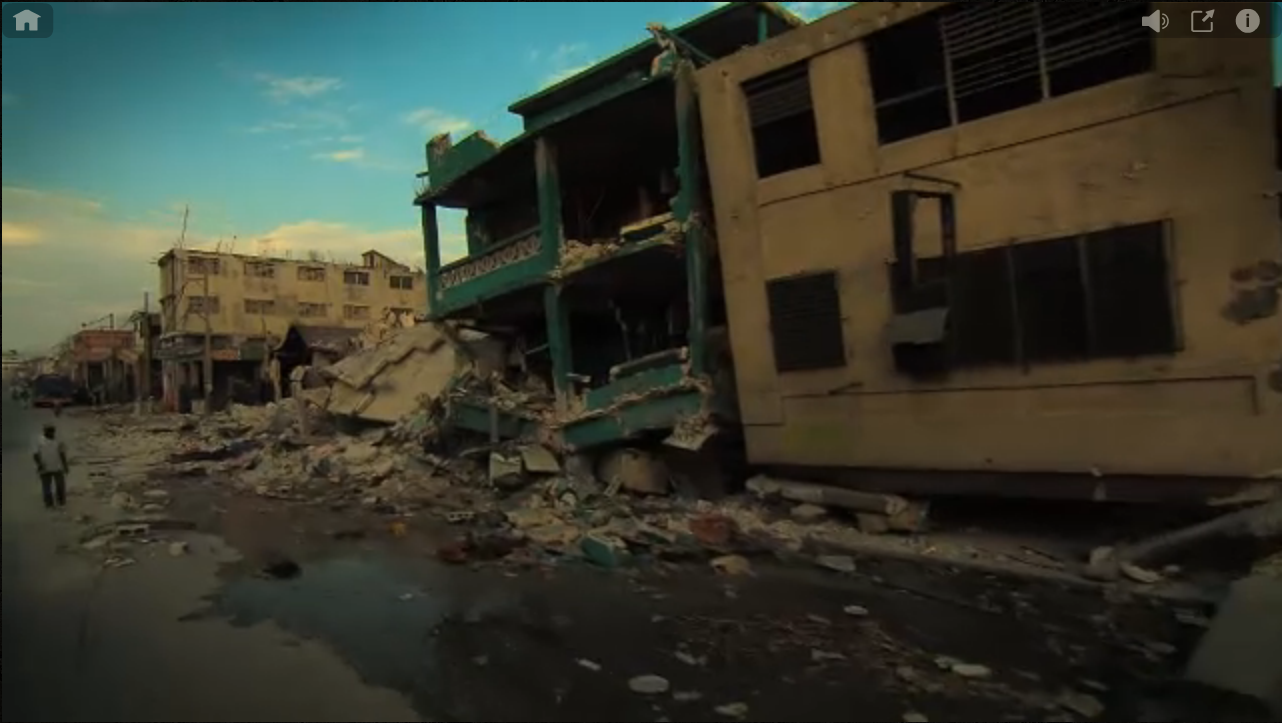Introduction
Inside the Haiti Earthquake is self-described as no a game, but as a simulation. The introduction text, after explaining it is not a game, says that it is a simulation, where you get to take on three different roles to make decisions and see their consequences.

Below is a detailed analysis of this game roughly following Brian Winn's1 Design/Play/Experience framework, including:
Learning
- Show the world what happened during the relief effort.
- Show the difficulties that faced three types of people.
- Have players realize that there is no easy way to “just fix it”
- To show the truth, not an idealized version of the relief.
- To make players want to help relief efforts in whatever way they can.
- Realize funding isn’t the only problem with the effort, but organization.
- Finding the right way to distribute is a hard choice.
Storytelling
The earthquake has just struck Haiti, and the player takes the role of a Survivor, a Journalist, or an Aid Worker. Although there is an image of all three, the player is meant to feel as if this happened to them, and in their own stories, the person is not shown. This helps the player feel as if it is them in whatever role was chosen, and make them feel like part of the events.

Players are shown real footage from Haiti, to not only give a realistic feel but to show what actually happened.
The narrative is presented through different choices that the player can make, and each choice triggers a short video clip and narration of what difficulties would be involved with that choice or the results of the choice.
The narrative supports learning in the sense that the branching narrative decides what you learn. After making your choice, you are shown what happens. The narrative itself changes slightly based on the choices players make, but for the most part, show how hard it was for everyone involved. This method doesn’t ensure you see every video clip, but puts meaning to what you do see, as part of “your experience”.
Gameplay
The player’s in game choices determine the narrative, and what clips are shown to them. Although the “story” will not end any differently, the choices still give the feel of having a unique experience. There is no “good” ending or “bad” ending to try to get to.
What the simulation does best is to make the player feel as if they are making important choices every step of the way, and making players feel empathy for those who were affected by the earthquake. Once players feel the need to help the situation, they care to see what their decision has done to help, if anything.
The simulation may fall short for players who go through the same story multiple times. Their choices do no actually make a difference, because the simulation is there to show video clips, not to be a “choose your own adventure” story. Although this would be an interesting gameplay element, the simulation was intended to raise awareness, not to be a game.
User Experience

The user interface is minimal, with only a few buttons along the top of the window, and choices for the player between video clips. The minimalistic interface works well, allowing players to view the clips without any “game elements” getting in the way of the intended experience. The buttons are no bigger than they need to be, and have plenty of information if the player needs it.
Technology
The footage from the simulation was filmed with professional equipment, and for a documentary about the relief effort. The simulation’s goal was to convey what happened impartially, and it did a good job of getting the player to feel as if they are part of the story. This was a very good choice for what they planned to make. All that mattered were the choices, and showing what the consequence.
Assessment
The simulation has been nominated for and won a good number of awards and has seen many positive reviews from users who have commented on the game. However, it is hard to say whether or not the simulation did its job without a way to know if the game inspired anyone to take action in the real world.

Conclusion
Inside the Haiti Earthquake was a great simulation. It was able to show what it was like in Haiti after the earthquake with actual footage, and was an experience I’m glad I had. It was able to show how hard it is to organize a relief effort, and hopefully has inspired some to take action so that future relief efforts can go more smoothly.